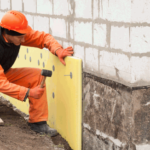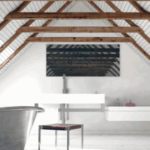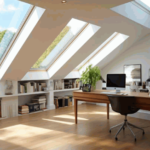Composite fencing is a popular alternative to traditional fencing materials, offering a range of benefits such as durability, low maintenance, and eco-friendliness.
We will explore how composite fencing is made, its advantages and drawbacks, and how it compares to other fencing materials like wood, vinyl, and aluminum.
Discussion on the installation and maintenance requirements of composite fencing will be included, along with tips on determining if it is the right choice for your property.
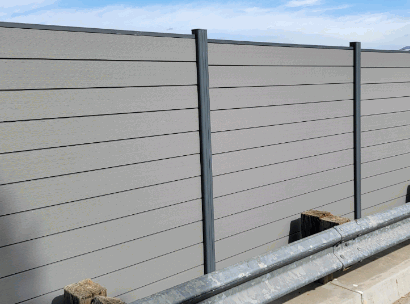
What Is Composite Fencing?
Composite Fencing is a type of fence made from a combination of materials, typically wood fibers and plastic, designed to offer a durable and low-maintenance alternative to traditional fencing options.
This innovative fencing option combines the organic look of wood with the durability of plastic, resulting in a fence that is resistant to rot, decay, and insect damage. Unlike traditional wood fences that require regular staining or painting, composite fencing boasts a long-lasting finish that retains its appearance for years with minimal upkeep. Its eco-friendly nature also appeals to environmentally conscious consumers as it reduces the need for harsh chemicals typically used in wood treatment. Composite Fencing’s modern design and sleek appearance add a contemporary touch to any outdoor space.
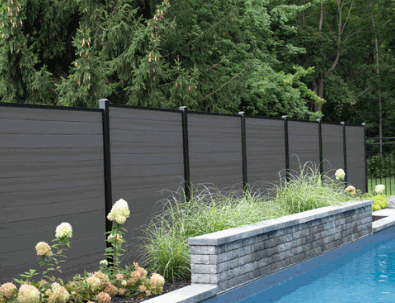
How Is Composite Fencing Made?
Composite Fencing is manufactured through a process that combines recycled materials such as wood fibers and plastic, with brands like Cladco, Miura Board, and Trex leading in innovative production techniques.
These renowned brands have perfected the art of transforming discarded wood and plastic into durable and visually appealing composite fences. The manufacturing process starts with collecting post-consumer and post-industrial materials like grocery bags, reclaimed wood, and sawdust. These materials are then cleaned, shredded, and blended together to create a homogenous mixture. Next, the mixture is molded into the desired fence shape using specialized equipment known for precision and efficiency.
One of the standout advantages of using recycled materials in composite fencing is the significant reduction in environmental impact. By diverting waste from landfills and reducing the need for virgin materials, these brands contribute to sustainable practices that preserve natural resources and reduce carbon emissions.
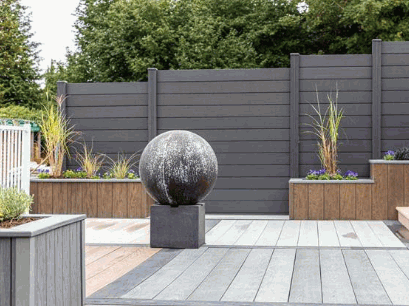
What Are The Benefits Of Composite Fencing?
Composite Fencing offers numerous benefits, including exceptional durability, low maintenance requirements, and an eco-friendly composition, making it an attractive choice for many homeowners.
Discover more: How To Clean Fence Before Painting
Durability
One of the primary benefits of Composite Fencing is its remarkable durability, offering resistance to weathering, termites, and rot, ensuring a long-lasting fencing solution.
Composite Fencing’s ability to withstand various weather conditions, from harsh sun exposure to heavy rains, sets it apart from traditional wood fencing options. This durability not only protects the appearance of the fence but also prevents warping or cracking that can occur with other materials over time.
The resistance of Composite Fencing against termites and rot plays a crucial role in its longevity. By eliminating the risk of termite infestation and rotting, homeowners can enjoy a low-maintenance fencing solution that retains its structural integrity for years to come.
Low Maintenance
Composite Fencing is known for its low maintenance, requiring minimal cleaning and no need for paint, sealant, or staining to keep it looking its best.
This makes it an excellent choice for homeowners and property managers who want a durable and attractive fencing solution without the hassle of constant upkeep. Unlike traditional wood fencing which may require regular repainting or staining to prevent weathering and deterioration, composite fencing retains its appearance with simple cleaning routines. With just some soap and water, you can easily remove dirt and grime to keep your fence looking new for years to come. The material is resistant to rot, decay, and fading, ensuring that your composite fence will maintain its integrity and color without the need for regular touch-ups.
Eco-Friendly
An eco-friendly option, Composite Fencing is often made from sustainable and recycled materials, with some products even carrying FSC Certification for responsible forest management.
Composite Fencing offers a sustainable alternative to traditional wood fencing, reducing the demand for natural resources. By using recycled materials, this fencing option helps to divert waste from landfills and minimizes the environmental impact of production processes. The incorporation of post-consumer plastics and wood fibers in Composite Fencing not only provides a durable and low-maintenance fencing solution but also reduces the need for virgin materials, thus contributing to conservation efforts.
Variety Of Styles And Colors
Composite Fencing is available in a variety of styles and colors, allowing homeowners to customize their fences to match their aesthetic preferences and property needs.
This wide range of options provides homeowners with the flexibility to choose a fence design that complements their home’s exterior, whether they prefer a traditional look or a more modern style. From classic wood-like finishes to sleek, contemporary colors, Composite Fencing offers something for every taste. The durability and low maintenance nature of composite materials make these fences not only visually appealing but also practical for busy homeowners looking for a long-term solution. The versatility of Composite Fencing allows properties to stand out while still blending in harmoniously with their surroundings.
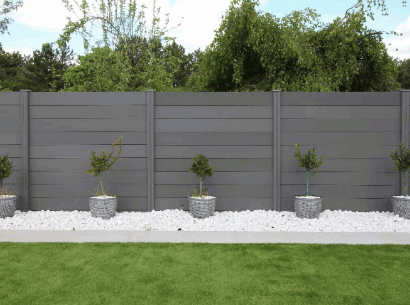
What Are The Drawbacks Of Composite Fencing?
While Composite Fencing has many benefits, it also has a few drawbacks, such as a higher initial cost, susceptibility to extreme temperatures, and limited repair options.
Higher Initial Cost
One of the main drawbacks of Composite Fencing is its higher initial cost compared to traditional fencing materials, though it can be seen as a long-term investment due to its durability and low maintenance.
Composite fencing may have a higher upfront cost, but its long-term financial implications can make it a worthwhile investment. When you compare the initial costs of composite fencing with traditional materials like wood or vinyl, it may seem more expensive. The durability of composite materials means that you are less likely to incur repair and replacement costs down the line.
The minimal maintenance required for composite fencing can result in cost savings over time. Unlike wood, which needs regular staining or painting, composite materials are designed to withstand the elements without extensive upkeep.
Can Be Affected By Extreme Temperatures
Composite Fencing can be affected by extreme temperatures, with significant fluctuations potentially impacting the material’s stability and pigmentation.
Exposure to high temperatures can lead to thermal expansion, causing the fencing to warp or bend, compromising its structural integrity. On the other hand, extreme cold can make the composite material brittle and prone to cracking. Prolonged exposure to UV rays can result in color fading and degradation of the material over time. These issues not only affect the aesthetic appeal of the fencing but also its durability and lifespan.
Proper maintenance and periodic inspection are vital to ensure the longevity of composite fencing in varying weather conditions.
Limited Repair Options
Another drawback is the limited repair options for Composite Fencing; damaged sections typically require the replacement of entire panels or posts instead of simple repairs.
Due to the nature of composite materials and the way they are manufactured, repairing individual components like boards or pickets can be quite challenging. Unlike traditional wooden fences, where damaged parts can often be easily fixed or replaced, composite fencing tends to require complete panels or post-replacements.
This not only adds to the overall cost but also makes the repair process more time-consuming and labor-intensive. Finding matching replacement panels or posts can be tricky, especially if the original product is no longer in production.
How Does Composite Fencing Compare To Other Fencing Materials?
When comparing Composite Fencing to other fencing materials like wood, vinyl, and aluminum, it’s essential to consider factors such as cost, durability, maintenance, and aesthetic appeal.
Wood Fencing
Wood fencing is often chosen for its natural aesthetic and traditional appeal, but it requires more maintenance and has a shorter lifespan compared to Composite Fencing.
Composite Fencing, on the other hand, offers a modern and sleek look that can mimic the appearance of wood without the high maintenance needs. With the advancement in technology, composite materials are designed to resist fading, warping, and rotting, making them more durable in the long run.
Regarding longevity, wood fencing may last around 10-15 years with proper care and maintenance, while Composite Fencing can easily surpass 20-25 years with minimal upkeep. This significant difference in lifespan directly affects the overall cost implications of choosing between the two types of fencing.
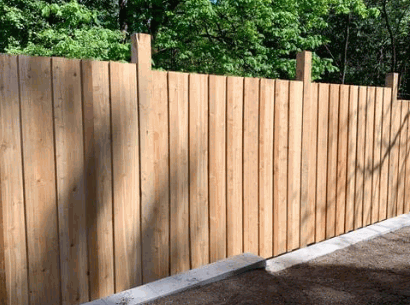
Vinyl Fencing
Vinyl fencing, often made from PVC, offers low maintenance and good durability, similar to Composite Fencing, but it may lack the aesthetic versatility and eco-friendly benefits.
One key similarity between vinyl and Composite Fencing is their low maintenance requirements. Both materials are resistant to rot, decay, and insects, making them ideal for homeowners seeking hassle-free fencing options. In terms of durability, vinyl and Composite Fencing also excel, withstanding harsh weather conditions without warping or fading.
Where these materials differ is in their appearance and environmental impact. While vinyl fencing comes in limited color options and may not provide the same natural look as Composite Fencing, it is recyclable but not biodegradable. On the other hand, Composite Fencing offers a wider range of styles that mimic the look of wood, but it may be more susceptible to scratching or fading over time. Composite Fencing is often made from recycled materials, making it a more environmentally friendly choice.
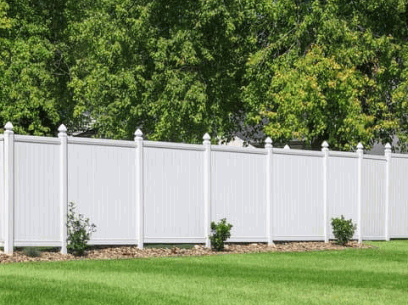
Aluminum Fencing
Aluminum fencing is known for its strength and lightweight nature, as well as being corrosion-resistant, yet it does not provide the same aesthetic warmth and customization options as Composite Fencing.
While aluminum fencing offers exceptional durability and low maintenance, its aesthetic appeal may lack the warmth and natural look that composite fencing effortlessly achieves. The trade-off between the two lies in the balance between strength and visual appeal. Aluminum, being lightweight, is easier to install and transport, making it a practical choice for many. Composite fencing shines in its ability to mimic the appearance of traditional wood while offering a range of colors and styles for customization.
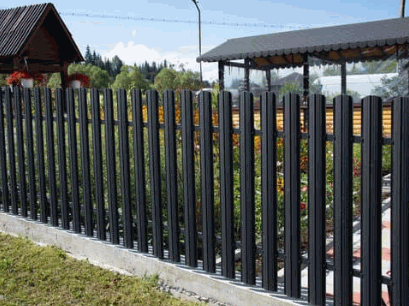
What Are The Installation And Maintenance Requirements For Composite Fencing?
Proper installation and maintenance of Composite Fencing are crucial for ensuring its longevity and performance, with guidance from experts like Action Fence and detailed installation guides available.
Regarding installing Composite Fencing, the process may vary slightly depending on the specific brand and design you choose, but the general steps remain consistent. You need to prepare the area where the fence will be installed, ensuring it is clean and level. Next, you’ll need to set up the posts securely in the ground, followed by attaching the panels according to the manufacturer’s instructions. Proper alignment and spacing are essential to achieve a professional finish.
In terms of maintenance, Composite Fencing is known for its durability and resistance to rotting, warping, and insect damage. Regular cleaning with mild soap and water is recommended to keep the fence looking its best. Inspecting for any loose panels or damaged sections periodically is also crucial to address issues promptly and ensure the fence’s integrity.
For additional assistance, Action Fence offers professional installation services and expert advice on maintaining your Composite Fence. You can also refer to detailed installation guides provided by reputable manufacturers to guide you through the process seamlessly.
Is Composite Fencing Right For Your Property?
Determining if Composite Fencing is right for your property involves considering factors such as your budget, the specific characteristics of your property and climate, and your preferred fencing style.
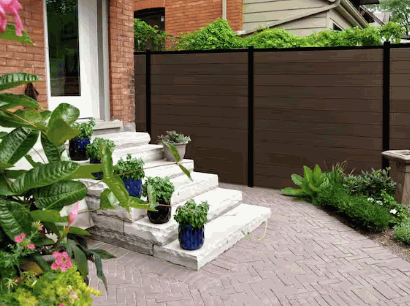
Consider Your Budget
When considering Composite Fencing, it’s important to evaluate your budget and determine if the initial cost is feasible while taking into account the long-term savings on maintenance and replacements.
Composite fencing may have a higher upfront cost compared to traditional materials like wood or vinyl. The durability and low maintenance requirements of Composite Fencing often result in significant savings over time.
Longevity is a key factor to consider, as Composite Fencing is known for its resistance to rot, pests, and fading, which translates to reduced repair and replacement expenses. These long-term benefits can make the initial investment worthwhile for homeowners looking for a cost-effective fencing solution in the years ahead.
Evaluate Your Property And Climate
Evaluating your property and local climate is crucial, as certain weather conditions and temperature changes can affect the performance and longevity of Composite Fencing.
Composite Fencing is known for its durability and low maintenance features, making it an attractive option for many property owners. In regions with extreme weather conditions like constant high humidity or prolonged sun exposure, the material’s resilience may be put to the test.
For properties in areas prone to heavy rainfall or humidity, moisture resistance is a key factor to consider when opting for Composite Fencing. If your location experiences fluctuating temperatures or extreme heat, ensure that the material is designed to withstand such conditions to prevent warping or fading.
Determine Your Preferred Style
Determining your preferred style is essential, as Composite Fencing offers a range of aesthetic options and customization features, including various colors and designs to match your property’s look.
When selecting a color scheme for your Composite Fencing, consider the overall vibe you want to create in your outdoor space. Whether you prefer a modern feel with sleek neutrals or a more rustic look with earthy tones, there are options to suit every taste.
The design possibilities are endless. From classic vertical slats to more intricate patterns, Composite Fencing allows you to personalize your fencing to reflect your unique style.

